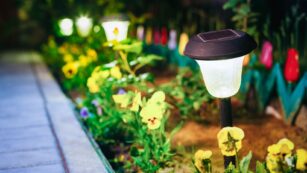Publication date : 21. September 2020 Shana Yuri
Are you looking for a new mattress?
You should replace your mattress at least every ten years, and with such a wide choice, choosing a new mattress is not easy. It will probably be no less frightening to discover that your usual mattress is not good for the environment – or your health.
For decades, mattress manufacturing has used a number of synthetic materials, harsh chemical solvents and flame retardants that are not good for your body or the earth.
You may never have thought about the environmental impact of your bed, but it’s very real.
There aren’t many regulations in place to protect consumers from the potentially harmful effects of mattress materials, but many companies recognize the need for healthy, eco-friendly beds and are addressing this issue in a sustainable way with organic mattresses made from natural materials.
How do you choose such a mattress?
First of all, you need to understand what types of organic mattresses are available and what natural materials they are made of.
It’s also helpful to know what the labels on the mattresses mean, so you can choose a bed that truly meets your safety and environmental standards.
1. Types of organic mattresses
Organic mattress manufacturers make the same types of mattresses as conventional mattress manufacturers.
The most popular choice are spring mattresses, where coil springs provide support and resilience, and layers of soft padding for comfort.
If you like a mattress that hugs your body like a foam mattress, you can opt for a natural latex mattress – it’s similar to a memory foam mattress in that it provides support without using springs, but it’s made of natural latex that has been treated with gum juice.
However, you should avoid using memory foam because it is made of synthetic polyurethane and can enter your home through exposure to toxic chemical gases.
If you need a mattress that folds easily, you can try a futon mattress.
A futon mattress made of cotton or organic wool has natural flame retardant properties, but since flame retardants are mandatory in all mattresses sold in the United States, mattresses containing organohalogen flame retardants (OHRs) should be avoided because the Consumer Product Safety Commission has determined that the risks of these chemicals outweigh their limited benefits.
2. Organic materials for mattresses
Organic mattresses are made from natural materials such as wool, cotton and natural latex. They do not contain synthetic latex, polyurethane foam or other potentially toxic synthetic products.
And because organic mattresses use organic materials, they are more durable. Because natural materials are also more resistant to flammability than synthetic materials, manufacturers need to impregnate them with dangerous chemicals less frequently.
Take cotton, for example. Cotton is generally grown with a lot of pesticides – so much so that it is considered the dirtiest crop in the world.
Cotton farmers use 16% of the world’s pesticides and it is one of the top four GM crops in the world. 98% of cotton is grown in nine of the 11 countries that produce GM cotton.
However, the
organic cotton mattress uses non-GMO organic cotton grown without dangerous
pesticides. This means you don’t have to worry about potentially harmful
pesticides in the fibers of the mattresses you and your family sleep on
. You can also rest easy knowing that your mattress will not harm the earth
.
3. Understanding labelling and certification of organic mattresses
To buy a quality organic mattress that is truly made from safe and environmentally friendly materials, you need to know what to look for in the label. The certifications by which manufacturers label their products are anything but transparent.
High quality organic mattresses carry the
Global Organic Textile Standard (GOTS) label and for natural latex mattresses the
Global Organic Latex Standard (GOLS) label. These
labels confirm that the mattress is made of more than 95% organic textile or
latex.
Other labels to look for in an organic mattress are Greenguard or the strictest Greenguard Gold.
These labels indicate that the mattress has been tested for formaldehyde gases and volatile organic compounds (VOCs), which can have short- and long-term health effects, including skin irritations and respiratory problems.
The Organic Content Standard 100 certification indicates the percentage of organic content in your mattress.
A firm, non-toxic mattress is essential if you care about the health of your family and your planet.
Conventional mattresses are made of synthetic materials and impregnated with chemicals and can release these toxins into your home. Protect your health and the environment – make your next mattress non-toxic and durable.
Related Tags:
live and sleep mattress, natural mattress amazon, best organic mattress for back pain, non toxic bed frame, organic latex mattresses, single mattress latex, best organic mattress for side sleepers, organic mattress canada, eco friendly mattress uk, eco terra mattress, organic twin mattress costco, naturepedic organic verse mattress, avocado green mattress 11 inch, best non toxic soft mattress, healthiest mattress australia, low voc twin mattress, non toxic mattress alternative, hydrated silica mattress, is pla batting safe, naturepedic full size mattress, organic trundle mattress, soaring heart mattress, tuft and needle off gassing, bella sera mattress, naturepedic mattresses, non toxic mattress uk, toxic mattress symptoms, ikea organic mattress, eco cloud mattress, luma mattress, happsy vs avocado mattress














